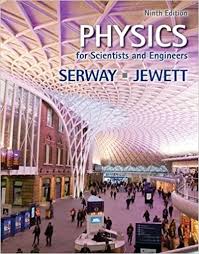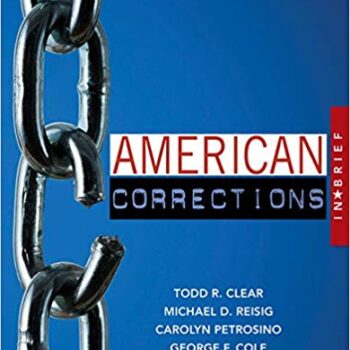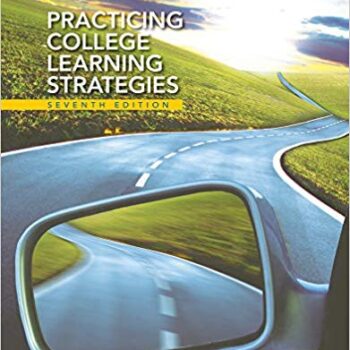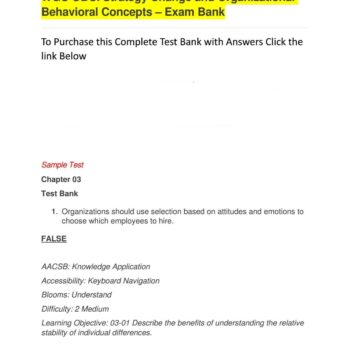A test bank contains questions and answers that help students review in preparation for their exams. It includes the Test Bank for Physics for Scientists and Engineers by Serway, which is helpful for physics students. This test bank deals with very relevant themes such as motion, energy, forces, and waves.
Advantages of Test Bank as a Tool
To comprehend the principles better and to prepare extensively, this test bank can be helpful. Below are some advantages:
- Wide Scope Coverage: It contains questions on all the major branches of physics. These include:
- Kinematics of One Particle
- Work and Energy
- Gravitational Law
- Wave Propagation
- Practice Questions: The test bank contains a wide assortment of questions, both multiple-choice questions and essay-type questions. This assists you in the practice and comprehension of the content.
- Exam Questions: You can work out the questions and find suitable areas for your additional studies. In such a manner, you will not waste your time in unnecessary areas.
- Easy to Use: The format of the work is convenient, and it is easy to locate questions about each chapter or topic. This assists in structuring your study time.
Key Points to Note in the Test Bank
Test Bank of Physics for Scientists and Engineers contains the following questions according to the broad areas:
- Kinematics: Concepts of motion in one dimension and two dimensions.
- Dynamics: Consideration of forces and Newton’s laws.
- Energy: The conservation of energy and work done across systems are studied.
- Momentum: This domain looks at the physics of collisions and the associated conservation laws.
- Thermodynamics: There is a focus on heat transfer and energy changes.
Tips on How to Maximize the Use of the Test Bank
To effectively utilize this test bank, consider the following tips:
- Start Early: Apply the use of a test bank as soon as you initiate the study of any physics course. This will build up your prospective background knowledge.
- Take Notes: While answering questions, you may not be able to understand some concepts; note these down. During your study sessions, these will inform you on areas that need a more detailed focus.
- Review Regularly: Go back to this test bank from time to time to practice. This would enhance your understanding of examination concepts and also prepare you for any form of test.
Conclusion
The Test Bank for Physics for Scientists and Engineers, 9th Ed by Serway is essential for every learner who wants to excel in his or her physics studies. It can help you in your educational endeavor, owing to the broad scope of contents covered and wide variety of question types. By utilizing the test bank consistently, you can instill confidence and lots of information in yourself which will help you do well in your tests.
Test Bank for Physics for Scientists and Engineers 9th Edition by Serway
Chapter 2—Motion in One Dimension
MULTIPLE CHOICE
1.The position of a particle moving along the x axis is given by x = (21 22t − 6.0t2)m, where t is in s. What is the average velocity during the time interval t = 1.0 s to t = 3.0 s?
|
a. |
−6.0 m/s |
|
b. |
−4.0 m/s |
|
c. |
−2.0 m/s |
|
d. |
−8.0 m/s |
|
e. |
8.0 m/s |
ANS: C PTS: 2 DIF: Average
2. A bullet is fired through a board, 14.0 cm thick, with its line of motion perpendicular to the face of the board. If it enters with a speed of 450 m/s and emerges with a speed of 220 m/s, what is the bullet’s acceleration as it passes through the board?
|
a. |
−500 km/s2 |
|
b. |
−550 km/s2 |
|
c. |
−360 km/s2 |
|
d. |
−520 km/s2 |
|
e. |
−275 km/s2 |
ANS: B PTS: 3 DIF: Challenging
3. The position of a particle moving along the x-axis is given by x = 6.0t2 − 1.0t3, where x is in meters and t in seconds. What is the position of the particle when it achieves its maximum speed in the positive x direction?
|
a. |
24 m |
|
b. |
12 m |
|
c. |
32 m |
|
d. |
16 m |
|
e. |
2.0 m |
ANS: D PTS: 3 DIF: Challenging
4.The velocity of a particle moving along the x axis is given for t > 0 by vx = (32.0t − 2.00t3) m/s, where t is in s. What is the acceleration of the particle when (after t = 0) it achieves its maximum displacement in the positive x direction?
|
a. |
−64.0 m/s2 |
|
b. |
zero |
|
c. |
128 m/s2 |
|
d. |
32.0 m/s2 |
|
e. |
−32.0 m/s2 |
ANS: A PTS: 3 DIF: Challenging
5. The position of a particle as it moves along the x-axis is given for t > 0 by x = (t3 − 3t2 6t) m, where t is in s. Where is the particle when it achieves its minimum speed (after t = 0)?
|
a. |
3 m |
|
b. |
4 m |
|
c. |
8 m |
|
d. |
2 m |
|
e. |
7 m |
ANS: B PTS: 2 DIF: Average
6. The position of a particle as it moves along the x-axis is given by x = 15e−2t m, where t is in s. What is the acceleration of the particle at t = 1.0 s?
|
a. |
22 m/s |
|
b. |
60 m/s |
|
c. |
8.1 m/s |
|
d. |
15 m/s |
|
e. |
35 m/s |
ANS: C PTS: 2 DIF: Average
7. Vx is the velocity of a particle moving along the x-axis as shown. If x = 2.0 m at t = 1.0 s, what is the position of the particle at t = 6.0 s?
|
a. |
−2.0 m |
|
b. |
2.0 m |
|
c. |
1.0 m |
|
d. |
−1.0 m |
|
e. |
6.0 m |
ANS: D PTS: 2 DIF: Average
8.A particle moving along the x axis has a position given by x = (24t – 2.0t3) m, where t is measured in s. What is the magnitude of the acceleration of the particle at the instant when its velocity is zero?
|
a. |
24 m/s2 |
|
b. |
zero |
|
c. |
12 m/s2 |
|
d. |
48 m/s2 |
|
e. |
36 m/s2 |
ANS: A PTS: 2 DIF: Average
9.At t = 0, a particle is located at x = 25 m and has a velocity of 15 m/s in the positive x direction. The acceleration of the particle varies with time as shown in the diagram. What is the velocity of the particle at t = 5.0 s?
|
a. |
15 m/s |
|
b. |
−15 m/s |
|
c. |
30 m/s |
|
d. |
0 |
|
e. |
−1.2 m/s |
ANS: C PTS: 2 DIF: Average
10.At t = 0, a particle is located at x = 25 m and has a velocity of 15 m/s in the positive x direction. The acceleration of the particle varies with time as shown in the diagram. What is the position of the particle at t = 5.0 s?
|
a. |
175 m |
|
b. |
125 m |
|
c. |
138 m |
|
d. |
154 m |
|
e. |
165 m |
ANS: D PTS: 3 DIF: Challenging













